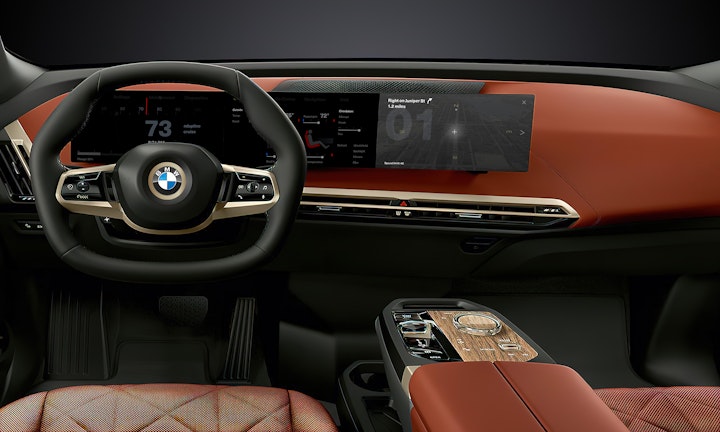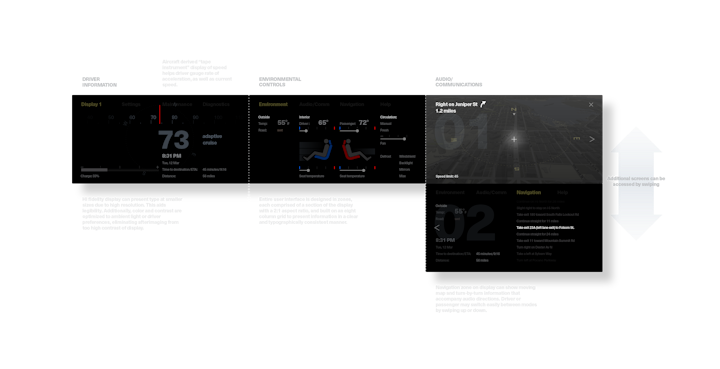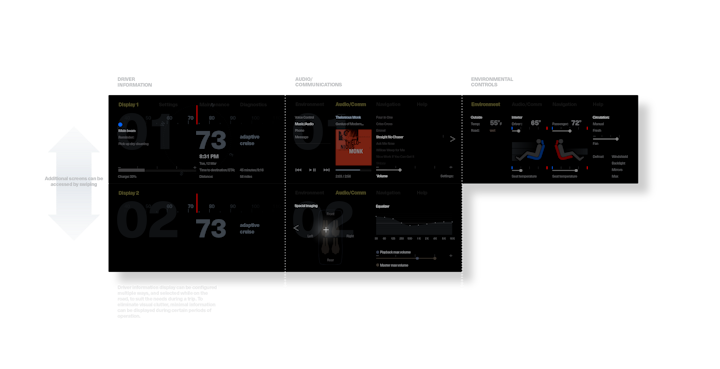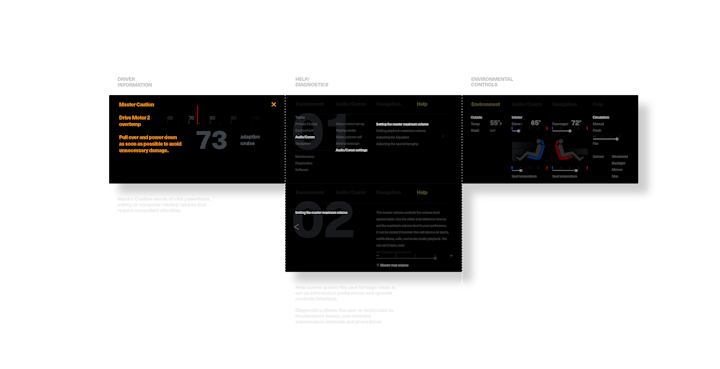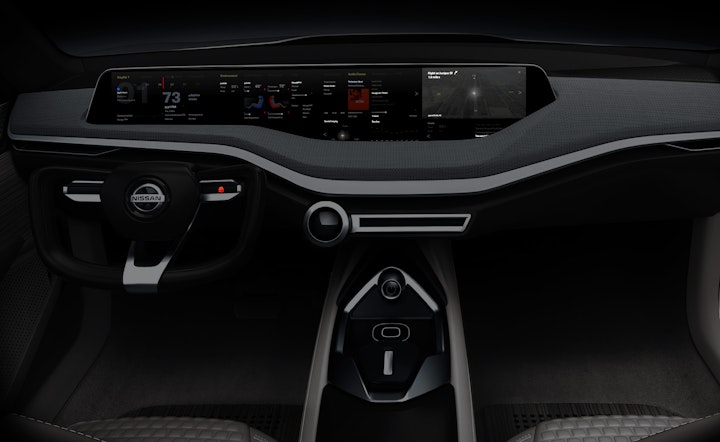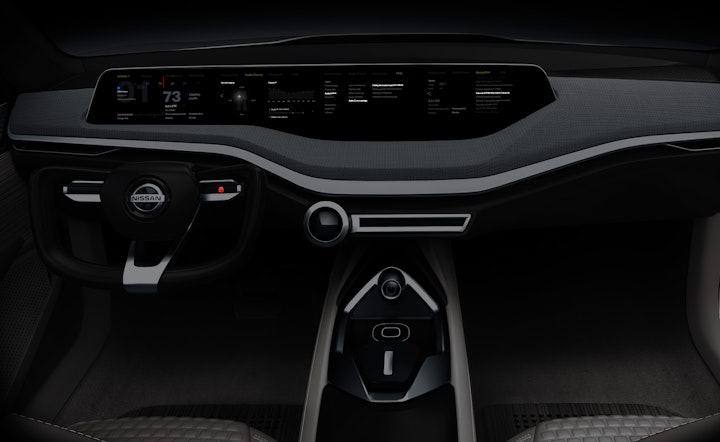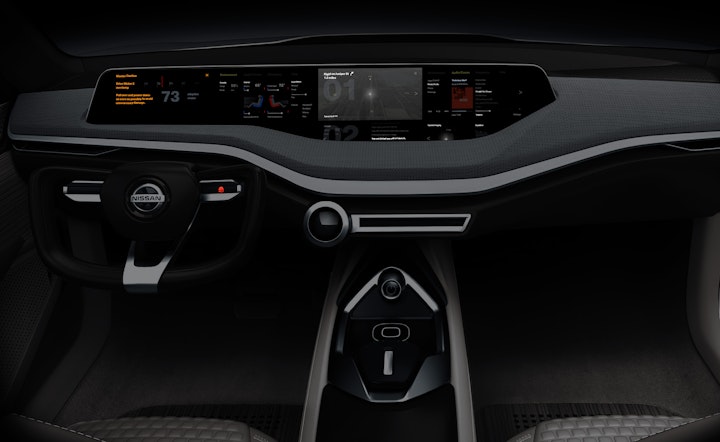GRID-BASED AUTO HMI/UI ≥
This self-initiated project takes the rigor that is practiced in a typical grid-based graphics project and applies it to the design of an automobile dashboard. Modern OLED displays can be made any shape, since the pixel array doesn't have to fill the standard rectangular grid. But, this particular exercise does use a wide aspect ratio rectangle that is divided into zones: driver information, environmental controls, navigation, and audio/communication. Zones can be arranged to the user's preference, so if the driver likes to have audio/communication functions immediately to her/his right of the driver info, s/he can dock it there. Since passengers often perform the role of navigator, the navigation zone can be docked closest to the passenger side, allowing them to interface with the map/directions and info that are being updated continuously, allowing the driver to concentrate on just the next step that is required to reach a destination.
Hi fidelity color displays will be the norm within the next few years, so this design takes advantage of their ability to render text smaller, with enhanced legibility, compared to current display technology. Consideration for text contrast with background is given high priority. The design optimizes the text and graphic elements' contrast to allow easy reading, without development of afterimages due to overly high contrast and brightness. This new technology will allow fine typography/graphics to come to automobile HMI, necessitating the need for higher graphics standards and better design practices.

